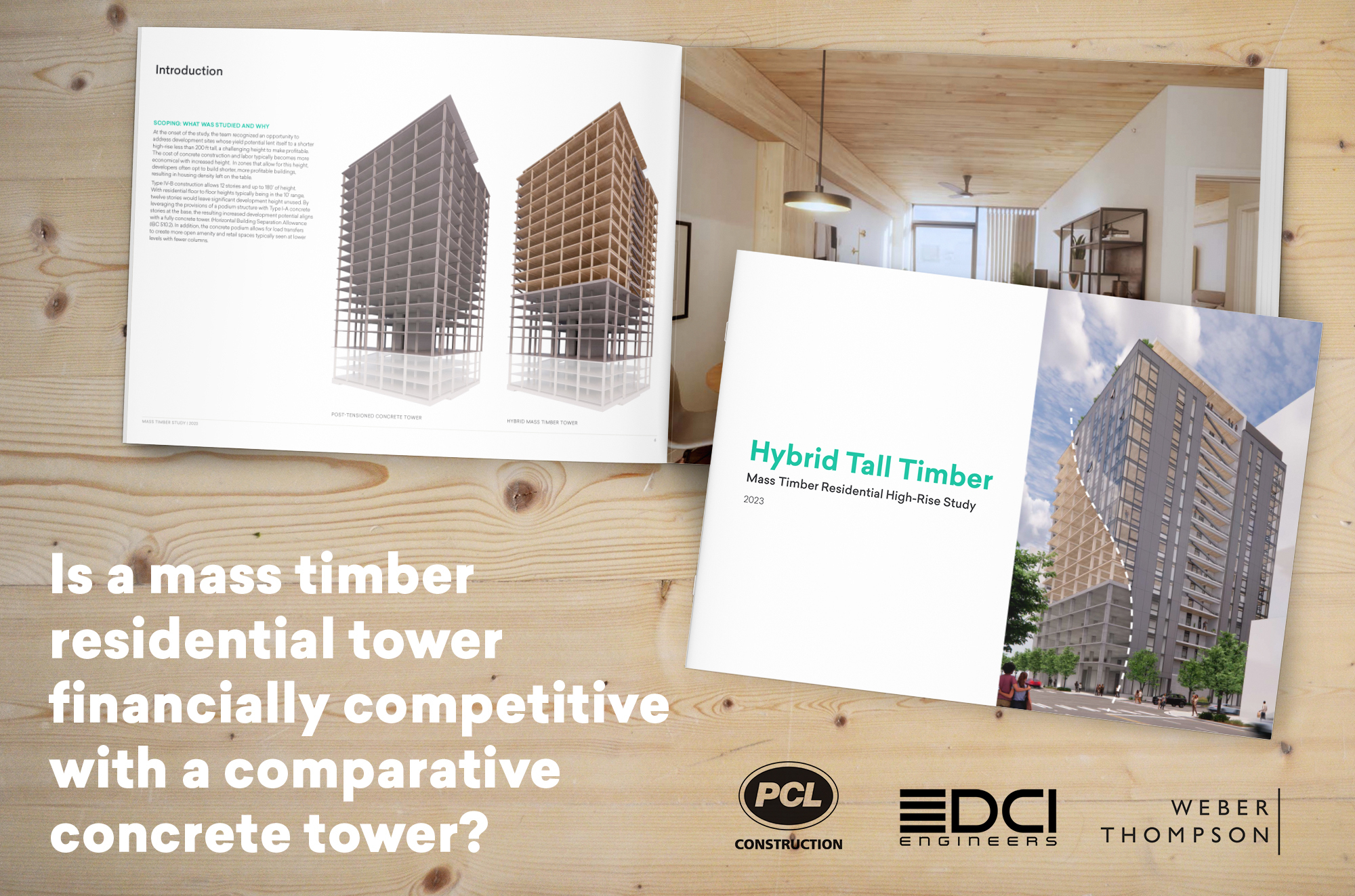SEATTLE (April 9, 2023) – Building a hybrid mass timber high-rise is now nearly as cost-effective as building a comparable concrete tower. This could be great news for both the environment and renters in the Seattle area.

A new study co-authored by PCL Construction, DCI Engineers, and Weber Thompson examines the decreasing costs of mass timber construction and its potential to expand residential space in densely populated urban regions.
Intermediate high-rise towers (those 180 feet or shorter) are often under-built in urban areas due to an unfortunate intersection of construction cost and code requirements. Even if the zoning allows, many developers forgo developing high-rise residential projects that are under 200 feet due to the cost of concrete construction at this scale. Mass timber construction provides an alternative that can be cost-competitive or more economical under the right circumstances – paving the way for the construction of more buildings in the intermediate tower height zone, and potentially increasing housing density.
Mass timber is a renewable construction material created using fast-growing lumber, often through a process of laminating planks together to create the buildings blocks of a tower. Pieces are pre-manufactured in a separate facility and then placed by crane on the construction job site, reducing the project schedule and resulting in a more efficient use of materials.
The study found that when factoring in cost-savings from the reduced schedules associated with using prefabricated mass timber, combined with an improved material supply chain, an 18-story residential highrise built using a hybrid of mass timber and concrete could cost as low as $74.45 per square foot to build. While slightly more expensive than the cost of $71.09 per square foot of a concrete building of the same size, it’s a competitive price that may influence developers to think twice about the materials used in their next project, especially to differentiate their product in a competitive leasing market. This shift is particularly relevant as the push for low-carbon construction is increasingly legislated via new carbon taxes and mandates.
Key findings of the study:
Embodied carbon reduction:
An 18-story hybrid building built of concrete and mass timber could store up to 3,350 metric tons of CO2e throughout the building’s useful life; the equivalent to the carbon sequestered by 4,000 acres of U.S. forests in one year or eliminating 745 gasoline-powered passenger vehicles from the road for one year.
Biophilic benefits:
An intriguing study recently released by Harvard reinforces the positive impacts of biophilia – people’s desire to connect with nature – on human health. Mass timber buildings with exposed wood create interior environments filled with biophilic connections. The allure of these health benefits along with the natural beauty of wood will differentiate projects in competitive leasing markets and potentially attract longer-term leases.
Impact on increased density and affordability: In urban infill zones with floor area or height restrictions, high-rise residential towers under 200 feet have traditionally been economically challenged in purely concrete construction. Mass timber construction could open up more sites with higher density for development if time and cost savings can be realized, creating an opportunity to address housing needs in the region.
The full report, “Hybrid Tall Timber: Mass Timber Residential High-Rise Study,” was co-authored by PCL Construction, DCI Engineers, and Weber Thompson. A copy of the report can be downloaded here.